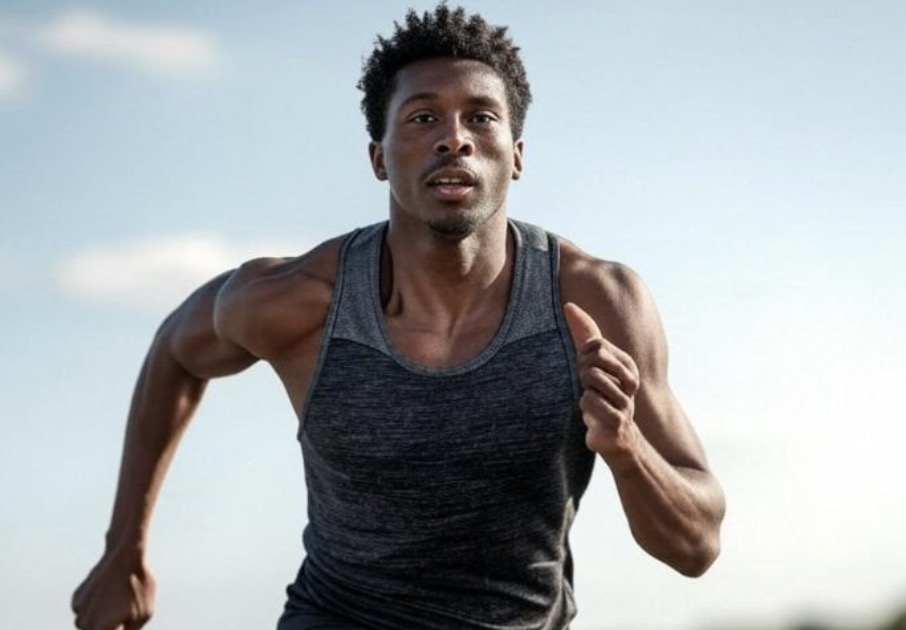100 M Final: Black People Know How to Sprint Faster
The 100 M Final stands as a test of raw speed in athletics. From Jesse Owens’ defiance in 1936 to Usain Bolt’s lightning-fast 9.58 seconds in 2009, this event captures the pinnacle of human acceleration. But what separates elite sprinters from the rest? How do athletes refine their skills to sprint faster in these high-stakes […] The post 100 M Final: Black People Know How to Sprint Faster appeared first on BlackSportsOnline.

The 100 M Final stands as a test of raw speed in athletics. From Jesse Owens’ defiance in 1936 to Usain Bolt’s lightning-fast 9.58 seconds in 2009, this event captures the pinnacle of human acceleration. But what separates elite sprinters from the rest? How do athletes refine their skills to sprint faster in these high-stakes races? Let’s find out!
The Evolution of the 100 M Final
The 100 M Final has transformed dramatically since its Olympic debut in 1896. Early races were timed with hand-held stopwatches, and tracks were cinder, not the engineered rubber surfaces of today.
The shift to electronic timing in 1968 eliminated human error, ensuring accuracy to the thousandth of a second. Athletes like Bob Hayes (10.06 seconds in 1964) and Wilma Rudolph (11.2 seconds in 1960) pushed boundaries with raw talent alone.
According to Kasinoutansvensklicens.com, the 100 M Final is famous among fans and sports betting enthusiasts. Hundreds of thousands of people bet on this race to have fun and win big money. Anyway, modern sprinters benefit from advanced gear. Nike’s Vaporfly spikes, for example, use carbon-fiber plates and lightweight foam to reduce energy loss.
Research by NCBI shows these shoes improve running economy by 4% to 6%, a game-changer in a race decided by a hundredths of a second. Yet, technology alone does not win 100 M Finals. Biomechanics, including how athletes angle their bodies, strike the ground, and pump their arms, also plays an equally critical role.
How to Sprint Faster – The Physics of Explosive Starts
Black sports are an integral part of the industry because this community dominates it. The first 10 meters often determine the outcome of a 100 M Final. Elite sprinters apply 600 to 1,000 pounds of force against starting blocks in under 0.3 seconds. A 90-degree bend in the front leg and 120 degrees in the rear optimize power transfer.
Dr. Ralph Mann, a former Olympic hurdler and biomechanics expert, analyzed thousands of sprinters using motion-capture technology. His findings? Athletes who drive their arms backward (elbows at 90 degrees) during acceleration gain 0.1 seconds by the 30-meter mark. Small adjustments, like keeping the head low for the first five strides, also reduce air resistance.
Training Secrets of 100 M Final Champions
Elite sprinters follow periodized training cycles. For example, Shelly-Ann Fraser-Pryce, a five-time 100 M Final world champion, splits her year into phases:
- Strength Building (12 weeks): Heavy squats (2x body weight), plyometrics.
- Speed Endurance (8 weeks): 150-meter repeats at 95% effort.
- Peak Phase (4 weeks): Race-pace drills with complete recovery.
Nutrition is equally precise. Andre De Grasse, the 2020 Olympic silver medalist, consumes 1.2 grams of protein daily to repair muscles. Hydration is timed: 500ml of electrolyte-rich fluid 90 minutes before training to avoid cramps.
React, Don’t Think When Thinking About How to Sprint Faster
Reaction time is the interval between the gun and first movement that averages 0.15 seconds in elite 100 M Finals. But it is not just physical. Mental rehearsals create neural pathways, turning complex movements into reflexes.
Practical tip: Practice reacting to random stimuli (claps, whistles) during training. This sharpens auditory processing, cutting reaction times by up to 0.02 seconds, a massive gain in a 10-second race.
How to Master Stride Length and Frequency?
Elite sprinters strike a balance between stride length and frequency. Usain Bolt’s 6’5” frame allowed strides over 9 feet, but shorter athletes like Shelly-Ann Fraser-Pryce (5’0”) compensate with rapid leg turnover.
The important thing is ground contact time: research shows top sprinters touch the ground for 0.08 to 0.1 seconds per step, compared to 0.12 seconds for amateurs. Black sprinters usually spring faster by focusing on the following:
- Improve hip flexibility through dynamic stretches like leg swings. Greater hip extension (pushing the leg backward) increases propulsion.
- Drill short, fast “butt kicks” and high knees at 95% effort for 20 meters. These exercises train the nervous system to fire muscles quicker.
Experienced coaches use laser-guided treadmills to measure real-time adjustments. For example, Trayvon Bromell, a 9.76-second sprinter, reduced his ground contact time by 5% using this tech, gaining 0.03 seconds over 100 meters.
The 100 M Final and Genetics
While training shapes champions, genetics set the ceiling. The ACTN3 gene, known as the “speed gene,” produces alpha-actinin-3, a protein in fast-twitch muscle fibers. According to PubMed Central, 95% of elite sprinters have at least one copy of the “R” variant of ACTN3, compared to 70% of the general population.
But genes are not destiny. Some sprinters with two “non-R” alleles ran 9.92 seconds, proof that targeted training can override genetic limits. Muscle fiber composition also plays a role because sprinters have 70–80% fast-twitch fibers, enabling explosive power.
Recovery Protocols for Peak Performance
Recovery separates champions from contenders. After a 100 M Final, lactic acid levels can hit 20 mmol/L and double the threshold for muscle fatigue. 10-minute sessions reduce inflammation 40% faster than passive rest, per the International Journal of Sports Medicine.
Moreover, Andre De Grasse sleeps 10 hours nightly, with 90-minute naps post-training. Deep sleep boosts human growth hormone (HGH) production by 75%, repairing microtears in muscles. So much so that consuming 20 to 25g of whey protein within 30 minutes of training maximizes muscle synthesis.
Final Words
The dominance of Black athletes in the 100 M Final comes from a confluence of factors contributing to the industry and sports economy. Genetic predispositions, such as higher ratios of fast-twitch muscle fibers and favorable biomechanics, contribute to power.
Cultural emphasis on sprinting in regions like Jamaica and the U.S., combined with access to elite coaching and training infrastructure, fosters talent. However, success is not monolithic; diverse athletes excel through discipline, technique, and innovation.
The post 100 M Final: Black People Know How to Sprint Faster appeared first on BlackSportsOnline.

 UnmutedSports
UnmutedSports 










